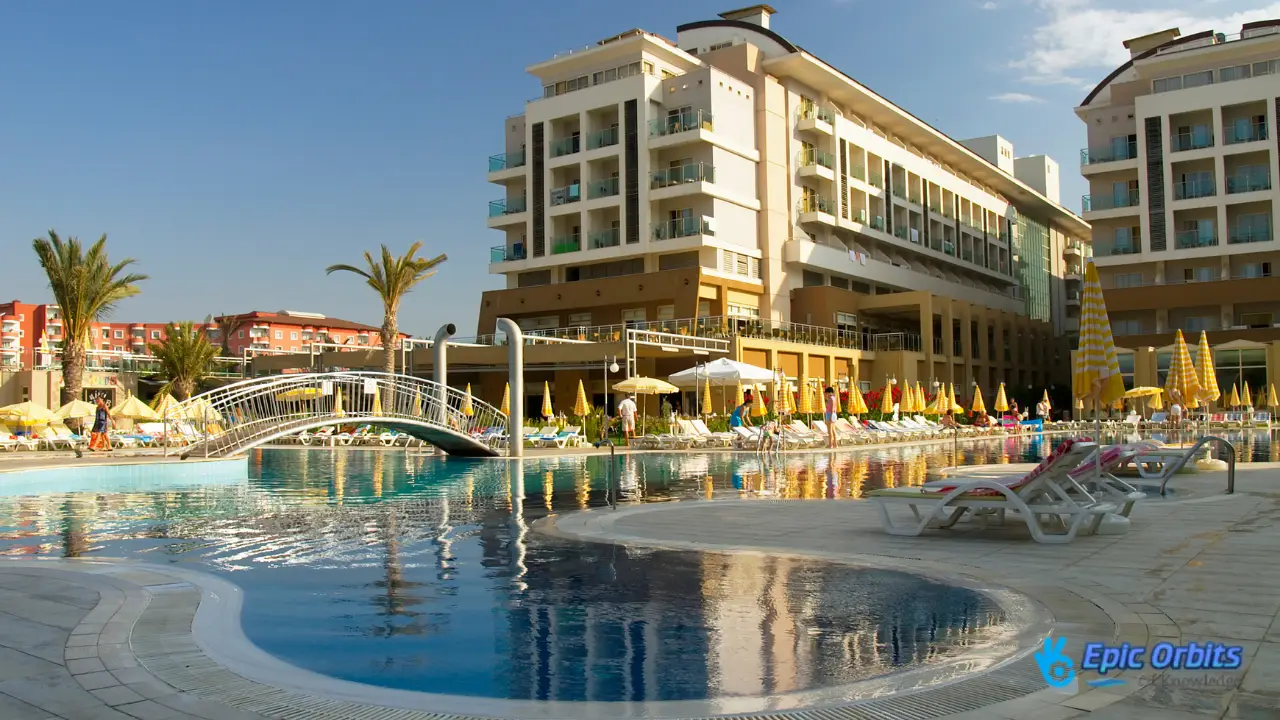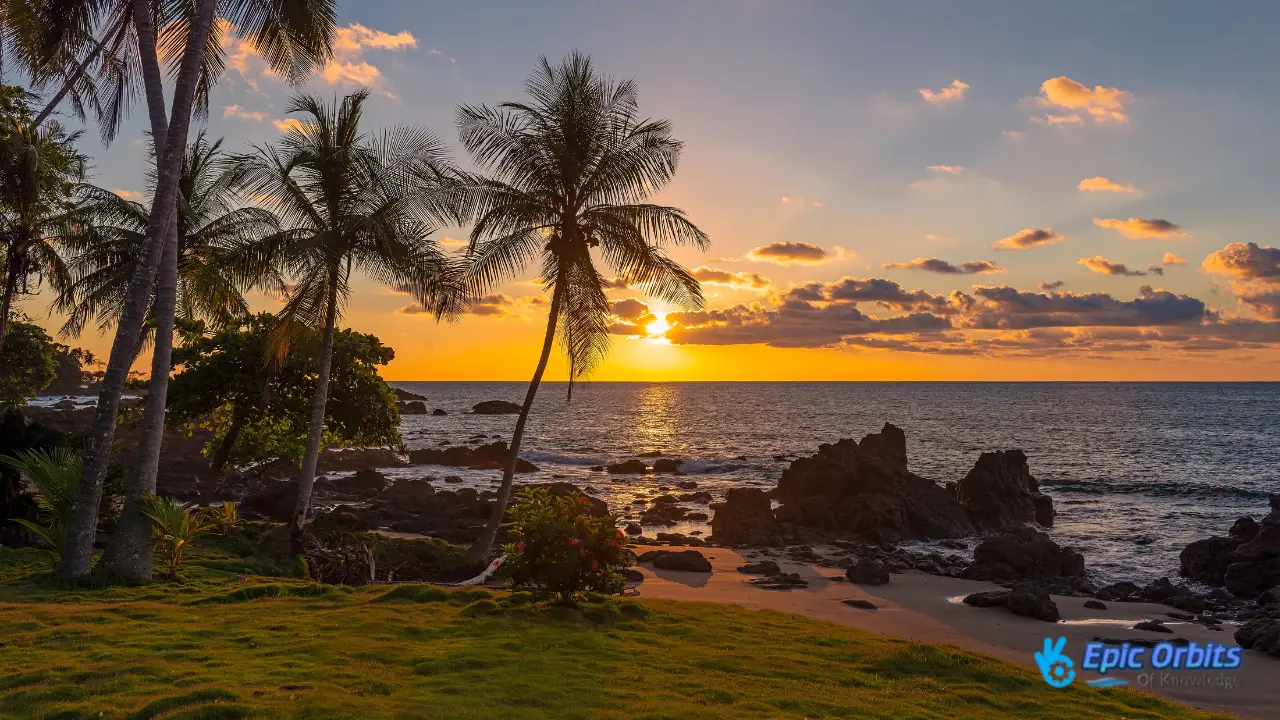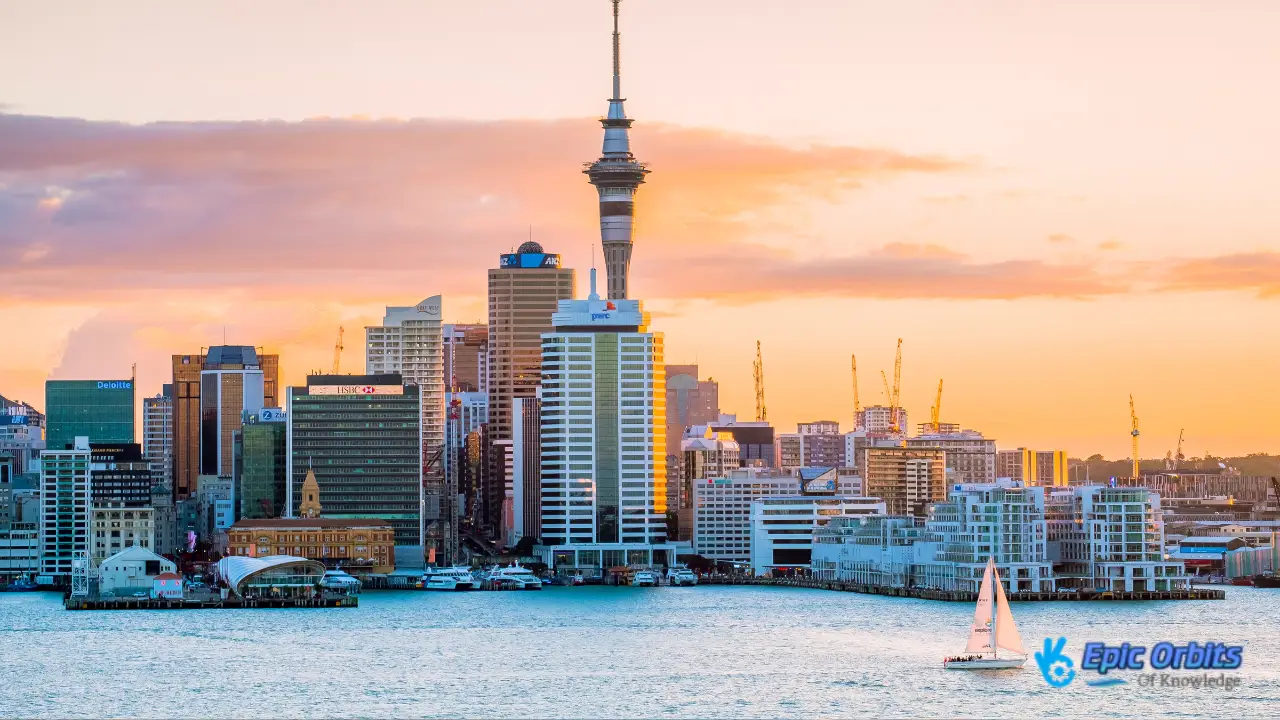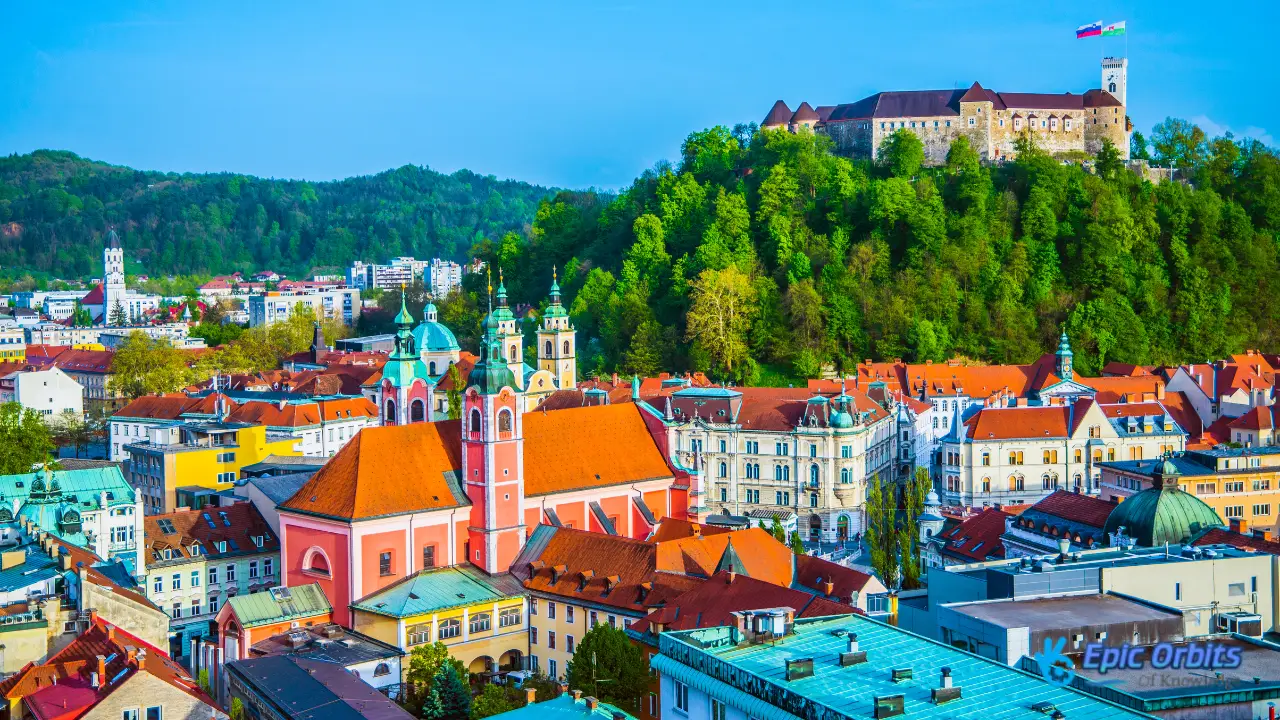How Eco-Friendly Travel Is Changing the Industry
Discover the rise of eco-friendly travel and its impact on the industry. Learn the top trends and tips for a greener journey.

According to research by Nature Climate Change, the worldwide tourist sector is responsible for around 8% of all greenhouse gas emissions.
This shocking number shows how big of an impact the sector has on the environment. As more people learn about climate change, more tourists are looking for eco-friendly solutions. This trend is causing a green revolution in the travel industry.
The transformation is not just a fad; it is a fundamental change in how the business works. Big companies are changing to satisfy the increased demand for eco-friendly travel.
A Global Movement for Eco-Friendly Travel
Traveling in a way that doesn't hurt the environment is no longer only for a few people; it's a worldwide trend. The Explorer's Passage is an award-winning adventure travel company committed to enhancing travel experiences. This goal fits with the rising desire for eco-friendly travel experiences.
Traditional tourism has a big impact on the environment since it causes pollution, destroys habitats, and changes the temperature. The fact that the sector depends on non-renewable resources and infrastructure that uses a lot of energy makes these problems worse. But we may start to make adjustments by recognizing their effects.
More visitors are aware of their environmental impact and seek less harmful travel options. This change in how people act is making the industry adjust.
More and more people want to travel in a way that is beneficial for the environment. This is mostly because millennials and Gen Z travelers are prepared to pay extra for experiences that match their ideals. Some of the most important trends are
- Travelers are replacing “bucket lists” with “better lists,” seeking more meaningful experiences.
- Following the epidemic, there has been a surge in eco-awareness, with 87% of visitors worldwide expressing a desire for more eco-friendly options.
- Sustainability credentials are just as important to consumers as pricing and location when they make a selection.
- Travel firms are changing what they provide and how they talk to customers to suit the rising need for sustainability.
This surge toward eco-friendly travel is more than simply a fad; it's changing the way people travel.
The Three Pillars of Responsible Tourism
For tourism to truly be sustainable, we must adhere to three main criteria. These principles must take into account social, economic, and environmental issues. These pillars rely on each other; thus, if one is weak, the others may be too.
1. Protecting the Planet
Being environmentally responsible means taking care of natural resources and maintaining biodiversity. This means cutting down on trash, saving water, and keeping animal habitats safe. Tour companies are increasingly doing things that are beneficial for the environment, including employing renewable energy and cutting down on single-use plastics.
“The goal is to leave the environment in the same, if not better, shape than when we got there.”
2. Supporting Local Communities
The social impact pillar's main goal is to help local communities by respecting their customs and making them healthier. This involves fair trading, helping local companies, and preserving cultural heritage. Through tourism, communities can grow and keep their cultural identities alive.
- Engaging with local communities through fair trade is crucial.
- Supporting local artists is a way to promote cultural heritage.
3. Creating Lasting Economic Value
Tourism that is economically sustainable means making long-term economic gains for the places that tourists visit. You can do this by putting money into local people, building supply chains that put local producers first, and putting earnings back into community infrastructure. The goal is to build economic ecosystems instead of extractive economies so that tourism supports traditional ways of making a living and keeps the community's economy independent.
- This can be achieved by investing in training initiatives within the community.
- We are developing a diverse range of tourist attractions to adapt to seasonal fluctuations.
- We are putting earnings back into programs that help the community.
How Big Travel Companies Are Going Green
Travel firms are changing the way they do business to include eco-friendly programs. This shift is transforming the industry, with major companies at the forefront of adopting environmentally friendly practices.
1. Airlines and Carbon Offset Programs
More and more airlines are using carbon offset schemes to lessen their effect on the environment. For instance, some airlines let customers make up for the carbon emissions from their flights by putting money into renewable energy projects or initiatives to plant trees.

Carbon offsetting helps lessen the damage that air travel does to the environment. Currently, air travel is responsible for around 2% of all worldwide carbon emissions. It lets airlines and passengers make up for the CO₂ emissions that come from flying by putting money into programs that cut carbon emissions in other places. If the whole industry worked together to offset flight emissions, all air travel could be carbon neutral.
- Carbon offsetting programs are a quick method for the aviation sector to make up for their carbon footprint by putting money into initiatives that cut down on CO₂ and other greenhouse gas emissions.
- About 40 airlines across the globe offer voluntary offsetting programs. Passengers who want to participate pay an extra charge to help pay for initiatives that reduce the CO₂ emissions from their journey.
- CORSIA, or the Carbon Offsetting and Reduction Scheme for International Aviation, is the global market-based measure for aviation emissions. Its goal is to keep flight emissions stable while the aviation industry works on other ways to cut CO₂ emissions, such as new technologies and better use of resources and infrastructure.
✅ What is carbon offsetting?
Carbon offsetting is a way to compensate for CO₂ released in one area by funding projects that cut carbon emissions elsewhere. This means that if a passenger's trip produces one tonne of CO2, they may opt to assist in paying for a project that makes the same amount of renewable energy, for example. Funding reforestation or putting money into renewable energy projects like wind turbines or solar panels are two examples of offsetting strategies.
Charging a tax on carbon emissions is not as successful as offsetting, since a carbon tax just makes corporations and passengers pay for their emissions, and there is no certainty that the payment will lead to a net decrease in emissions. A tax on aviation will not always lower emissions; instead, it will just be a method for governments to make money and take money away from the aviation industry that might be used to buy more efficient planes. Offsetting costs the industry money, but the money goes straight to programs that make up for CO₂ emissions.
An emissions trading system (ETS), commonly called cap-and-trade, is another way to address carbon emissions. This means putting a cap on all emissions and letting businesses purchase and sell emission permits to reach their own goals. There are already a number of ETS agreements in place for aviation at the domestic or regional level. The European ETS applies to all flights between airports in the EU, Iceland, Norway, and Switzerland. China has set up a trial ETS in a few places, including one in Shanghai that covers domestic airlines. New Zealand's ETS includes domestic flights.
✅ How can passengers offset their emissions?
People and businesses that wish to offset the emissions from their air travel may do so via voluntary carbon offsetting programs. 40 airlines across the globe offer voluntary offsetting programs. Passengers pay a little extra for their flights to help pay for initiatives that will make up for the CO₂ emissions. You may pay for these programs either at the time of purchase, when airlines add the option to their online sales engines, or when passengers are sent to a third-party offset provider.
Currently, not many travelers are using it. The business is putting money into projects that will make buying and understanding offsets simpler. A few airlines have gone even further and automatically offset flights:
- BRA Airlines in Sweden offsets all of its passengers' trips and has started selling a “Green Class” ticket that adds sustainable aviation fuel to the trip.
- Scandinavian Airlines already offsets all “youth” tickets (for customers under 25) and the flights of all its EuroBonus members (approximately 40% of the airline's total CO₂ emissions). The airline also lets customers pay extra to switch to sustainable aviation fuels.
- Since 2012, Delta Airlines has been working to reduce the amount of pollution it causes.
- Since the beginning of 2020, British Airways and Air France have offset all of their domestic flights in the UK and France, respectively.
- JetBlue will pay for all of its US domestic flights starting in July 2020.
- As of November 2019, all of easyJet's flights are offset.
✅ Can aviation achieve carbon-neutral growth?
The International Civil Aviation Organization (ICAO) started CORSIA in October 2016 to help reduce CO₂ emissions from international flights. The aviation sector backed the program. CORSIA was established to help international aviation flourish without adding more carbon emissions beyond 2020 and to stop various governments and regions from coming up with their own carbon offsetting and tax schemes. The aviation sector made a smart choice by pushing for the creation of a single worldwide measure, which ICAO would oversee.
A single worldwide carbon offsetting program helps protect the environment by making up for most of the CO₂ emissions that come from international commercial flights. The global method also stops market distortion, which could occur if some airlines pay for emissions and others don't, depending on their registration. All routes and airlines are covered by CORSIA, except for domestic air transport services, which are covered by the Paris Agreement (and before that, the Kyoto Protocol).
We are implementing CORSIA in stages, allowing certain countries to take into account their unique situations and strengths. From 2021 to 2026, only flights between “volunteering” governments will have to meet offsetting criteria. This aspect is in line with how the Paris Agreement was meant to work. Starting in 2027, all flights will have to be offset, except for those going to and from Least Developed Countries (LDCs), tiny Island Developing States (SIDS), Landlocked Developing Countries (LLDCs), and tiny aviation markets. These countries might choose not to participate.
Between 2021 and 2035, CORSIA is expected to cut over 2.5 billion tons of CO₂ and bring in more than $40 billion in climate funding. This money will be used to pay for measures that lower CO₂ emissions.
✅ What offsets are eligible under CORSIA?
There are several techniques to cut down on CO₂ emissions that may be used as offsets, and many of them also have additional social, environmental, or economic advantages. You may get offsets from various activities, such as wind energy, energy-efficient cooking stoves, methane collection, forestry, and other programs that reduce or prevent emissions.
The kinds of offsets that CORSIA will accept are vital for figuring out how well the program works. Governments, the aviation industry, and environmental organizations all want to make sure that the offsets bought under CORSIA really help the environment. In the past, many offset programs in other fields failed to deliver on their promises to cut emissions. A committee of government-appointed technical experts will select which emissions units airlines may utilize under CORSIA. They will do these tasks based on several criteria that ICAO has authorized. The essential ideas are already in place: reducing or offsetting greenhouse gases must also have positive effects on the environment; offsets must be a permanent decrease in emissions; and compensation should not cause emissions to rise in other places by accident.
Rules will ensure the CO₂ reduction from the offset unit is credited only to the buyer, is uniquely tallied, and is additional. To guarantee this degree of environmental integrity, operators will probably have to buy offsets that have been checked by reliable organizations, like the Gold Standard or the Verified Carbon Standard.
Airline operators may claim lower emissions by using sustainable aviation fuels as long as they save at least 10% of greenhouse gases and are not derived from biomass taken from land with a lot of carbon. A globally coordinated strategy will make things clearer, assist in eliminating obstacles to the use of sustainable aviation fuels, and encourage investment in this important field.
✅ Does offsetting work?
Carbon offsetting is not a quick fix for climate change. Reforestation, constructing solar panels, and erecting wind turbines all take time. When done well, offsetting funds may help ventures that would not have gotten off the ground otherwise. It also helps people in underdeveloped nations by producing employment, enhancing their quality of life, and promoting biodiversity.
But carbon offsetting can't do it all by itself. Offsetting is only a short-term remedy to buy time as the industry works on and invests in new technologies, sustainable aviation fuels, better operations, and infrastructure to cut down on CO₂ emissions.
2. Hotel chains that care about the environment
Hotel companies are also becoming green by using less electricity, saving water, and making less garbage, among other things. Some hotels are even using eco-friendly materials in their building and design.

Sustainability is no longer simply a fad in the hotel sector; it's a must. According to the UNWTO Tourism Sustainability Report 2023, 73% of visitors throughout the globe choose hotels that use environmentally friendly techniques. As a result, major hotel chains around the world are changing the way they do business to satisfy changing consumer needs.
Hotels are focusing on eco-friendly measures that help the environment and make guests' stays better and more profitable. These include cutting down on trash and buying things locally.
Our goods are the perfect mix of sustainability and high quality for chefs, purchasing managers, and caterers who want to purchase edible flowers in Dubai or add eco-friendly items to their menus.
✅ Sustainability Certifications and Standards
More and more big hotel chains are looking for sustainability certifications like LEED, EarthCheck, and Green Key. The number of hotels that got these certificates increased by 20% from the year before. These criteria demonstrate a hotel's commitment to the environment and serve as effective promotional tools for environmentally conscious tourists.
Hotels that put money into eco-friendly procedures see real rewards. Research indicates a clear correlation between sustainability certifications and consumer satisfaction, with patrons prepared to pay a premium for environmentally friendly lodging. Partnerships help businesses in the hotel, restaurant, and café (HORE) sector maintain these high standards.
✅ Waste Reduction and Circular Solutions
Food waste is still a big problem in the hotel business. Hotels all around the globe are using new technology to keep an eye on and cut down on waste. Accor, for instance, employs AI technologies to keep an eye on kitchen waste so that cooks may change menus and cut down on extra food. Over 754 Accor hotels have saved more than 650,000 meals via agreements like Too Good To Go by 2021.
Iberostar Hotels & Resorts goes even farther by composting and vermiculture on-site, converting food waste into fertilizer for their kitchen gardens and local farmers. These closed-loop technologies show how hotels can help the environment and save money at the same time.
✅ Local and Sustainable Sourcing
Buying local and environmentally friendly goods helps the economy in your area and lowers your carbon impact. Accor's Healthy and Sustainable Food Charter puts local, seasonal, and certified eco-farm goods at the top of the list. Some hotels, including Fairmont Singapore and Swissôtel The Stamford, have even set up their own urban farms to grow up to 30% of the vegetables they require.
Buying local isn't only good for the environment for cooks and caterers; it's also good for the taste and quality of the food. Edible flowers are a long-lasting method to improve the look and flavor of food while also helping the eco-HoReCa movement.
✅ Energy Efficiency and Innovative Technology
To minimize their carbon footprints, hotels are buying gadgets that use less energy and renewable energy sources. T The Iberostar analysis indicates that optimizing kitchen energy usage could reduce emissions by up to 17 million tons per year. Smart technologies that control energy usage help reduce costs and make operations more environmentally friendly.
✅ Promoting Plant-Based and Low-Carbon Menus
Hotels are shifting toward providing plant-based meals as part of their attempts to be more environmentally friendly. Dishes made with plants release significantly less pollution than those made with animal products. Accor's relationship with Zero, a brand of environmentally beneficial plant-based protein, demonstrates that menus can be both healthy and helpful for the environment. T These meals rely heavily on edible flowers, which add a natural and colorful touch to plant-based dishes while demonstrating a commitment to using ecologically beneficial ingredients.
W Working together is essential for making the hotel sector more environmentally friendly. Suppliers play a crucial role for hotels aiming to become more eco-friendly.
3. Tour Operators Leading the Way in Protecting the Environment
Tour companies are contributing to environmental protection by promoting eco-friendly excursions and various related projects. Some tour companies are using a portion of their income to protect natural areas and support local communities.
Examples of these efforts include ensuring that guides are trained in environmental care, limiting the number of tour groups, and enforcing adherence to “leave no trace” principles. Tour companies that concentrate on conservation are turning passengers into strong champions for the environment by making them feel connected to endangered habitats and animals.

By using eco-friendly methods and supporting eco-friendly projects, big travel businesses are not only helping to protect the environment, but they are also helping to protect places across the globe.
7 new eco-friendly travel trends that are changing the industry
The tourism industry is reacting to growing concern for the world with seven new eco-friendly trends. These new ideas are not only about making travel less harmful; they are also aiming to make it have a positive effect.
- Regenerative Travel Beyond Sustainability: Regenerative travel is about bringing new life to places instead of merely keeping them the same. It's about making a place better than when you got there, either by protecting it or helping the people who live there.
- Plastic-Free Initiatives and Waste Reduction: Many travel firms are now becoming plastic-free by getting rid of single-use plastics and starting full recycling systems. These programs cut down on a lot of the trash that comes with travel.
- Wildlife Conservation Tourism: This trend is about helping conservation efforts by going on vacation. Travelers may help safeguard endangered animals and their habitats by taking part in wildlife conservation programs.
- Sustainable Transportation Options: The move toward more environmentally friendly transportation is picking up speed. For example, electric or hybrid cars, biofuel-powered planes, and better public transit networks are all helping to lower carbon emissions.
- Farm-to-Table Experiences: Farm-to-table trips help local farms by delivering meals made with ingredients from the area. This helps the local economy and cuts down on the carbon impact of transporting food.
- Carbon-Negative Accommodations: Some hotels and lodges are now trying to be carbon-negative by employing renewable energy sources, carbon offsetting, and constructing in a way that doesn't harm the environment.
- Virtual Tourism Alternatives: Virtual tourism is becoming a low-carbon option that lets people see places from afar using cutting-edge technology like VR and AR. This trend is especially helpful for sites that are vulnerable or too busy and need to restrict the number of visitors in order to protect them.
| Eco-Friendly Trend | Impact | Example |
| Regenerative Travel | Rejuvenates destinations | Community-led conservation projects |
| Plastic-Free Initiatives | Reduces waste | Hotels eliminating single-use plastics |
| Wildlife Conservation Tourism | Protects endangered species | Participating in wildlife conservation projects |
These developments are changing the tourism business and making it easier to see the globe in a more responsible and sustainable manner. By using these new ideas, visitors may help make tourism more sustainable in the future.
Useful Advice for Traveling with the Environment in Mind
We can help the environment and the communities we visit as tourists. We can greatly lessen our impact and improve our trips by following a few basic rules.
1. Before You Go: Sustainable Planning and Packing
Before you go, think about packing light and selecting eco-friendly travel items. Utilize items such as reusable cloth bags and water bottles to reduce waste. Learn about the culture and environmental issues of the place you're going so you may be a more considerate traveler.
- To save room in your baggage, pack clothes that may be used for more than one item.
- Select environmentally friendly travel gear.
2. Transportation Choices: Reducing Your Carbon Footprint
Transportation is a big source of carbon emissions. To help with this, try to use public transportation, walk, or bike as often as you can. For lengthier trips, check into carbon offset programs or choose airlines that provide more fuel-efficient choices.
- Investigate how to offset the carbon emissions from your travel.
- When you get to your location, use public transit or walk or bike about.
3. Accommodation and Daily Habits While Traveling
The place you stay and the things you do every day may have a big effect on the environment. Choose hotels or lodges that are beneficial for the environment and use sustainable methods. You can save water by taking shorter showers and turning off the water when you're not using it.
- Pick hotels that have favorable policies for the environment.
- Think about how much water and energy you use.
4. Supporting Local Economies and Conservation Efforts
For travel to be sustainable, it is important to help local economy and conservation activities. Engage with locals by dining at local eateries, purchasing handmade items, and participating in conservation initiatives. Such involvement not only makes your trip more captivating, but it also helps the local economy.
- Eating at restaurants run by locals is a good way to help the community.
- Join in on local tours or environmental efforts.
If you make these things part of your travel routine, you'll be an eco-friendly traveler who makes a difference.
The best places to visit for eco-tourism
The ecotourism movement is spreading over the globe, and certain places are leading the way. Not only are these destinations popular with tourists, but they are also establishing new norms for eco-friendly tourism.
1. Costa Rica: The Pioneer of Sustainable Tourism
Costa Rica is not just a place to go on vacation; it's an engaging sensory experience. There are many natural attractions in the nation, such as beautiful river valleys, magnificent volcanoes, mystical cloud forests, and hundreds of beaches along the Pacific and Caribbean coastlines. There are hot springs and treatments at fancy hotels, small cottages owned by families all over the place, and a calm, family-oriented culture that ties it all together.

✅ Why Visit Costa Rica?
Costa Rica is one of the most biodiverse and ecologically gorgeous areas on Earth; thus, you should go there. Costa Rica is home to more than 500,000 species, both on land and in the water. There are a lot of flora that grow well here, such as more than 1,400 kinds of orchids and hollow ficus, or fig trees, that you may climb from the interior.
Going on an adventure outside, resting on the beach, seeing animals in their natural environment, learning about a new culture, supporting eco-friendly tourism and family-owned businesses in the area… You won't only have a great time on vacation in Costa Rica; you'll also feel good about where your money is going.
Costa Rica is a genuinely unique place to visit since it has a little bit of everything. Even the pickiest tourists will discover something they like.
- It’s a tropical paradise: The country's scenery is made up of beautiful beaches, green woods, and birds of practically every hue of the rainbow. When you eat the country's tropical fruits, the bright colors will be on your plate. The veggies are also tasty. The best thing is? There is no military in this family-oriented country; therefore, the national slogan “Pura Vida!” or “Pure Life” has two meanings.
- The beaches are absolutely stunning: the country has two coastlines, so the Caribbean Sea and the Pacific Ocean flow over the beaches. There are golden sand, white sand, and even crunchy sand formed of broken seashells (Playa Conchal; you're welcome). The beaches' exceptional protection is one of their charms. A 200-meter marine zoning restriction has stopped the building of large hotels on the beach so that everyone may enjoy nature's gifts.
- Rainforests and cloud forests: You undoubtedly already know what rainforests are like, but if you've never gone to a cloud forest, you're in for a real treat. Cloud forests are tropical woods that are always covered in a misty haze. They make up less than 2.5% of the world's tropical forests. Costa Rica's woods are home to a wide variety of plants and animals, such as orchids, many insects, birds, and even mammals that live on land and in the water.
- One word: sustainability. Costa Rica is quite green, from ecolodges to reforestation. Costa Rica is so green that they are on course to become the world's first carbon-neutral nation. More than 99 percent of their power comes from renewable sources, including geothermal, hydroelectric, wind, solar, and biomass. Your trip money goes straight to help these initiatives, which protect 30% of the land. Even programs provide visitors the option to do things that are beneficial for the environment, like planting trees or helping juvenile sea turtles find a place to live.
- Action and adventure: Costa Rica is a wonderful place to go on vacation. One minute you'll be strolling on a suspension bridge among the trees, and the next you'll be flying over it on a zip line. You may go whitewater rafting down river rapids, sea kayaking, surfing, snorkeling, and diving, among other things.
✅ Where should I visit in Costa Rica?
If this is your first trip to the nation, the abundance of options, including beaches, mountains, lakes, volcanoes, rainforests, and cloud forests, may overwhelm you. When you tour the country's sceneries, you may choose your own journey. These are the five finest spots to visit in Costa Rica:
- Arenal: Arenal is at the top of the list. The town's official name is La Fortuna, Costa Rica, but “Arenal” is the word used to describe the whole Arenal recreational region, which includes Arenal Volcano, Arenal Volcano National Park, Lake Arenal, and several great whitewater rafting rivers. You can see the volcano from all throughout town. You may do tough things like trekking near a volcano, rappelling, rafting, and mountain biking around the lake here.
- Monteverde: On the opposite side of Lake Arenal lies Monteverde, Costa Rica, which has a distinct sort of outdoor activity. You should absolutely go to the Monteverde Cloud Forest Reserve at some point in your life. It has a lot of different flora and creatures. Zip lines, suspension bridges, aerial trams, horseback riding, and night tours of the forest are among popular things to do.
- Manuel Antonio: If you want to go to the beach, start with Manuel Antonio. This place offers everything for everyone: snorkeling, jungle adventures, birding, river tubing, and day cruises on catamarans. You have many choices. The best thing is? You can observe many different creatures up close in Manuel Antonio National Park. You can also help keep their natural environment in excellent shape.
- Santa Teresa—Mal Pais: Want to live the life of a typical beach bum or surfer? Welcome to the two towns of Santa Teresa and Mal Pais in Costa Rica. You may spend your days surfing in the sun and your nights drinking ice-cold beer at a beach party in Santa Teresa. In the meanwhile, the tranquil village of Mal Pais allows you to fish to your heart's delight and enjoy calm, empty beaches that are perfect for yoga, reading, and drawing.
- Tortuguero: Tortuguero, Costa Rica, has an Afro-Caribbean feel that you won't find in other regions of the nation. What else do you not want to miss? Floating safaris offer a unique experience where you can observe birds, crocodiles, and caimans living in canals and the surrounding marshes. Tortuguero means “region of turtles” in Spanish, and the area is also home to breeding sea turtles.
✅ When Is the Best Time to Visit Costa Rica?
Costa Rica is a terrific place to visit at any time! But when you say “best time to visit,” you probably mean “When is Costa Rica's dry season?” From December to April, the Pacific Slope of the country will be busy with tourists from all over the world who want to escape the winter blues. The dry season on the Caribbean Slope lasts from July to October. Remember that it may rain on any coast at any time of year, and it's not unusual for mountains to be colder than lower elevations.
The months of May through November are known as “green season” because the rain keeps the country's plants healthy and attractive. In this time, the Pacific Coast changes in a beautiful way. The Pacific dry forests turn into lush rainforests, making the land seem wonderful. When you arrange your vacation, the phrase “green season” has two meanings. It's the time of year when you can “save some green.” During the low season, you may save a lot of money on places to stay and things to do. Additionally, it's common for afternoon showers to transition into sunbreaks, ensuring your entire trip remains enjoyable. If you would rather not give up luxuries but yet need to go to Costa Rica on a budget, think about going on vacation this time of year.
Christmas and New Year's, as well as the week before Easter Sunday, which is called Semana Santa or Holy Week, are the busiest seasons to travel in Costa Rica. If you want to go during these weeks, you need to book your hotel a long time in advance. It's preferable to just plan your trip to Costa Rica at another period.
✅ Does Costa Rica Have Good Beaches?
The beaches in Costa Rica are wonderful! Even better, there's a beach for you, whether you want to relax in peace and quiet, go on an adventure, or have a romantic getaway.
- Looking for a romantic vacation for two? Stay at Nosara and Samara on the Nicoya Peninsula. The beaches there are really gorgeous and have smooth white sand.
- Want something more relaxed and down-to-earth? Refer to the two communities of Santa Teresa and Mal Pais. Santa Teresa is fantastic for surfing and bonfire celebrations, while Mal Pais is a tranquil fishing village with beaches that aren't too crowded. Montezuma, which is close by and quite laid-back, is also worth thinking about.
- If you love nature, you should certainly go to Drake Bay, which is also the entrance to Corcovado National Park. You can't sunbathe on this beach. Hike through primary rainforests with many different plants and animals; swim in areas full of marine life; do sea kayaking, horseback riding, and more.
- Tamarindo is the ideal place for outdoor enjoyment, nocturnal fun, and perhaps romance. The golden beaches offer fun for kids and adults alike.
You may go on a lot of day excursions to other beaches that have wonderful snorkeling and access to the forest. Some of these beaches are in national parks, so you'll have an even higher chance of seeing indigenous animals.
✅ How to Plan a Trip to Costa Rica?
Planning your Costa Rica schedule is easy if you follow these three steps:
Step 1: Determine your travel budget, as it's the one variable you can't alter. Your travel budget will help you decide when to go, what kinds of things to do, and which places to stay. Want an example?
If you consider the kids' schedules, they have winter and summer breaks. Costa Rica's peak season occurs during the winter in North America and Europe, while summer is the “green season.” If a family of four is comfortable with a bit of rain, they can choose a time of year that suits them best. Even during Costa Rica's rainy season, the weather is usually mild, and there are bursts of sun.
Step 2: Decide what kind of trip you want to have: cheap, midrange, or luxury? Are you looking to spend a significant amount of money on a place to stay, primarily for relaxation? Would you prefer a simple, clean place to sleep and a hot shower, given your plans for back-to-back excursions in Costa Rica? Once you determine where and why you want to spend your trip money, you can finally…
Step 3: Decide when you want to leave. If you can afford it, consider going to Costa Rica from December to April, the best time. Want to save some money during the green season? From May to November, you may plan your vacation. No matter how much money you have, you have a few months to select from.
Bonus Points: Have an Anywhere Local experts take care of all your travel, lodging, and activities. We'll take care of all the hard work of making a tailored trip plan for you, no matter what you require. You don't have to spend hours online searching for information; you can just select from the possibilities that already fit your budget, vacation kind, and time of year!
✅ Why Is Costa Rica So Sustainable?
Costa Rica is so sustainable because everyone in the country is dedicated to it. This is one of the reasons why ecotourism and Costa Rica's efforts to protect the environment work hand in hand. However, there is still a continual fight throughout the nation to live up to environmental values and sustainable development. Their failure is because of crooked politicians, illegal poaching and logging, and contracts that pay well. Costa Rica has mostly turned down chances to use its rich natural resources to make valuable goods. It possesses many precious metals in the South Pacific, oil along the Pacific Coast, and unique hardwoods in the jungle.
Costa Rica has chosen to generate renewable energy and follow an ethic of sustainable development instead of stealing its own limited resources. The country is already on course to become the first carbon-neutral country. By 2020, a combination of geothermal, hydroelectric, and wind power fulfills more than 99% of Costa Rica's energy demands. The solar and biomass industries are also making progress. A big part of what makes Costa Rica sustainable is the energy alternatives that are already in place. This lets the nation concentrate on finding and using new sustainable solutions in other sectors.
2. New Zealand: Adventure Tourism with Environmental Protection
New Zealand is a wonderful place for anyone who wants to try new things, including hiking, bungee jumping, and skiing. The nation also cares about preserving its natural beauty.

✅ Best of New Zealand
New Zealand has a huge number of cruise alternatives for such a tiny nation.
New Zealand is known as “the land of the long white cloud” (Aotearoa). It has the ninth-longest coastline in the world, which is 15,000 kilometers long, and its landscape is stunning and varied. On a Kiwi adventure, you can see the sunken valleys and tall mountains of Fiordland, the clear waters, golden beaches, and coves of the Bay of Islands, the different types of marine life in Hauraki Gulf, the beautiful playground of Marlborough Sounds, the famous wildlife havens of Stewart Island, and many famous Kiwi towns along the way, such as Dunedin, the Scottish city; Christchurch, the Garden City; and Gisborne, which has rich, fertile soil.
✅ Essential experiences in New Zealand include
- Akaroa: This charming fishing community is located in the harbor of an extinct volcano on Banks Peninsula. People from Christchurch like to go there on weekends.
- Napier: Napier lies on Hawke's Bay and is recognized for its Mediterranean climate, superb wines, and art deco buildings. Cape Kidnappers is a great place for birdwatching, and the beautiful seashore is a great place to walk.
- Fiordland National Park: Fiordland is a World Heritage site with rough mountains, thick rainforests, alpine lakes, and beautiful waterfalls. Milford Sound, the most well-known fjord, is simple to get to by car and has stunning views. Only by boat on Lake Manapouri can you reach Doubtful Sound, a peaceful contrast to Milford Sound. Visitors may see Fiordland Crested Penguins and New Zealand Fur Seals.
- Auckland: New Zealand's biggest metropolis has both beautiful natural scenery and sophisticated attractions. Some of the best things to see include the Māori taonga collection, Rotoroa Island, the vineyards on Waiheke Island, and the SkyWalk and SkyJump at the Sky Tower.
- Stewart Island: Stewart Island is known for its colorful sky and provides a calmer, more nature-based way of life with chances to hike, boat, fish, and see animals.
- Wellington: The lively city by the sea is renowned for its busy bars, cafés, and arts scene. There is entertainment, art displays, and a wide range of food options for visitors to enjoy.
- The Chatham Islands, the easternmost frontier of New Zealand, have beautiful views, cultural riches, and a laid-back way of life. Visitors may enjoy the clean waters of the Southern Pacific Ocean, seafood, and outdoor sports.
✅ Natural Beauty & Landscapes
One of the best things about New Zealand is that it has many different types of landscape in a limited region. You may discover fjords, glacier landscapes, temperate rainforests, hot springs and geothermal areas, volcanic regions, alpine ranges, and coasts, and they are frequently quite near to each other.
Milford Sound in Fiordland is renowned for its sheer cliffs, waterfalls that flow down them, and foggy fjords. The North Island has many volcanoes and geothermal areas, such as Rotorua and Taupō. The Southern Alps stretch across the South Island.
Furthermore, New Zealand's official tourist website says that each season has its own charm and that the weather is warm in many places.
✅ Cultural Heritage, Indigenous Peoples and Adventures
Māori culture is a big part of what makes New Zealand what it is. Visitors may learn about Māori culture via performances, visits to marae (meeting grounds), traditional arts & crafts, and tours conducted by Māori people. Many tourism spots have Māori history and work together to protect the environment.
New Zealand promotes itself as a place for adventure. There are many things to do, such as hiking (tramping), mountain biking, kayaking, walking on glaciers, bungee jumping, skydiving, and taking scenic flights.
You can travel from the beach to the mountains to the geothermal fields in a short amount of time since the landscape is so different. This makes for a journey with many different experiences.
✅ Tourism Trends & Economic Impact
- There were around 3.38 million overseas visitors from July 2024 to June 2025. This is down from 3.87 million during the same time period in June 2019, before the COVID-19 epidemic.
- The number of visitors coming each month is still going up. For instance, in July 2025, the number of visits went up by 6.6% over the previous year, reaching roughly 236,600.
- There were anticipated to be 355,360 arrivals in January 2025.
In January 2025, the United States welcomed 3.36 million visitors from other countries. This total was 343,000 more than in January 2024. - These results indicate that tourism is bouncing back strongly after a drop due to the pandemic, although certain areas are still below their high levels in 2019.
✅ Economic Contribution
- International tourists brought in roughly NZD 12.2 billion to New Zealand's GDP in 2024, which is a 23% increase from 2023.
- Tourism is an important export industry and a crucial part of the economy of many areas. It helps businesses, hotels, transportation companies, and cultural industries stay in business.
- The New Zealand government wants to bring back at least 3.89 million visitors by 2026, which is the same number as in 2019. I By 2034, the government also wants to double the value of tourist exports, which was approximately NZD 9.9 billion in 2023.
In short, tourism is essential for New Zealand since it brings in money, creates jobs, builds infrastructure, and keeps many rural and isolated towns alive.
New Zealand has a wide variety of landscapes, cultures, and adventures that you won't find anywhere else on the globe. If you prepare beforehand, respect the local culture and environment, and are open to new experiences, a vacation to New Zealand may change your life and be quite memorable. The country is still recovering from the pandemic's effects and is working hard to find ways to boost tourism in a way that will last. This makes it a lively and changing place to visit.
3. Slovenia: Europe’s Green Gem
Slovenia has been a leader in sustainability throughout Europe. Its capital, Ljubljana, has become a city where residents and visitors can easily walk around, enjoying parks and modern waste collection services.

These ecotourism hotspots show that travel can be both fun and responsible.
Slovenia is a tiny but very diversified nation in Central Europe. It is recognized for its mountains, lakes, forests, wine areas, lovely cities, and rich cultural history. If you're thinking of going there, here's everything you need to know to have a wonderful time.
✅ Why Visit Slovenia?
- Natural beauty & landscapes: Slovenia has beautiful alpine landscapes in the Julian Alps, glacial valleys, karst cave systems, crystal-clear lakes like Lake Bled and Lake Bohinj, rivers like the Soča, and a short Adriatic coastline.
- Outdoor activities: Slovenia's small landscape and well-kept paths make hiking, skiing, biking, rafting, exploring caves, and walking in nature quite satisfying.
- Cultural & historical richness: The capital city of Ljubljana features a beautiful old town, a castle, and a lively cultural scene. Škofja Loka and Piran are medieval towns with buildings that are important to history. There is a lot of history in castles, caverns, and communities.
- Wellness & slow travel: There are many thermal baths, wellness resorts, and peaceful nature regions. Slovenia also encourages eco-friendly vacations and travel that are calmer and more nature-focused.
✅ Tourism & Statistics
- Slovenia had the most tourists ever in 2023, with around 6.19 million people coming and staying for more than 16.13 million nights.
- In 2024, the number of tourists increased to 6.58 million, resulting in 16.85 million overnight stays, which represented a significant growth.
- About 70–72% of overnight stays are by overseas tourists, whereas fewer stays are by people from the US.
- Germany, Italy, Austria, Croatia, the Czech Republic, and the Netherlands are some of the biggest places where visitors come from.
- Mountain towns and the capital, Ljubljana, are quite popular. Coastal and resort towns have significant seasonal changes.
✅ Top Attractions & Highlights
Here are some places that are worth seeing and visiting:
Ljubljana is the capital city. It has a beautiful old town, the Ljubljanica River, a castle on a hill, laid-back cafés, and intriguing buildings and is an excellent place to start seeing the rest of the nation.
- Ljubljana: The capital city has a picturesque old town, the Ljubljanica River, a castle on a hill, laid-back cafes, and unique architecture. It's also a wonderful place to start seeing the rest of the nation.
- Lake Bled: Famous lake featuring an island, a castle on the lake, beautiful hikes, and boating.
- Lake Bohinj: Less busy than Bled in the Julian Alps; ideal for wildlife, hiking, and getting away from it all.
- Triglav National Park: Mountains, paths, and wilderness in the Alps.
- Postojna Cave: One of the largest karst cave systems; a wonderful experience underneath.
- Škocjan Caves: The caverns that are part of UNESCO World Heritage are particularly stunning. (One of the best things about Slovenia.)
- Medieval towns: Piran (on the seashore), Škofja Loka, and Ptuj all have old buildings, tiny streets, and a slower pace of life.
- Waterfalls & natural features: e.g., Rinka Falls in the Logar Valley.
✅ Challenges & Considerations
- Some natural locations that are far away may not have many roads, buildings, or amenities.
- During peak season, popular tourist spots and routes might become quite busy. Traveling at off-peak times provides you additional options.
- The weather in the Alps may change quickly, with snow, storms, and other things.
- Costs may go up in tourist locations, notably for food, transportation, and hotels. This is especially true around renowned lakes, caverns, and ski resorts in the mountains.
✅ What Makes Slovenia Special
- Its size: it's not too big, so you can see mountains, lakes, caverns, and the seaside all in one trip without having to go too far.
- Nature, culture, and wellness are all in balance here. You may hike in untouched wilderness, relax at a spa, or learn about history in a medieval village in the same area.
- Slovenia has been aggressively pushing quality over quantity, protecting the environment, going off the main path, and promoting slow tourism.
Slovenia is tiny, yet it has a lot to offer travelers. The Julian Alps have snow-capped peaks, Lake Bled has emerald seas, and Piran has the Adriatic charm. These are just a few examples of how the country combines nature, culture, and sustainability in a manner that few other places can. It is ideal for tourists who want both adventure and peace since it is committed to eco-friendly tourism, has friendly people, and has a wide range of attractions.
Slovenia provides a trip full of beauty and authenticity, whether you're touring medieval villages, trekking through beautiful national parks, or resting in thermal spas. If you plan your vacation to Slovenia carefully and appreciate its natural and cultural history, you'll have memories that will last a lifetime and a profound affection for this hidden treasure in the heart of Europe.
Where do we go from here in terms of eco-friendly travel?
The tourism business is about to alter a lot because of climate change. The tourist business throughout the world is responsible for 8% of all greenhouse gas emissions, while aviation is directly responsible for 2.4% of worldwide emissions.
It's not enough to merely be less evil in the future; you have to be actively beneficial. Regenerative tourism concepts are increasingly gaining prominence. They concentrate on making places better than we found them. Climate change will spur new ideas, such as floating hotels and carbon-neutral aviation fuels.
Augmented and virtual reality will also change the way people travel. We will measure success based on its impact on local communities and ecosystems, shifting the focus from quantity to quality. The travel sector has to put renewable energy and lower carbon footprints first if we want a sustainable future.



